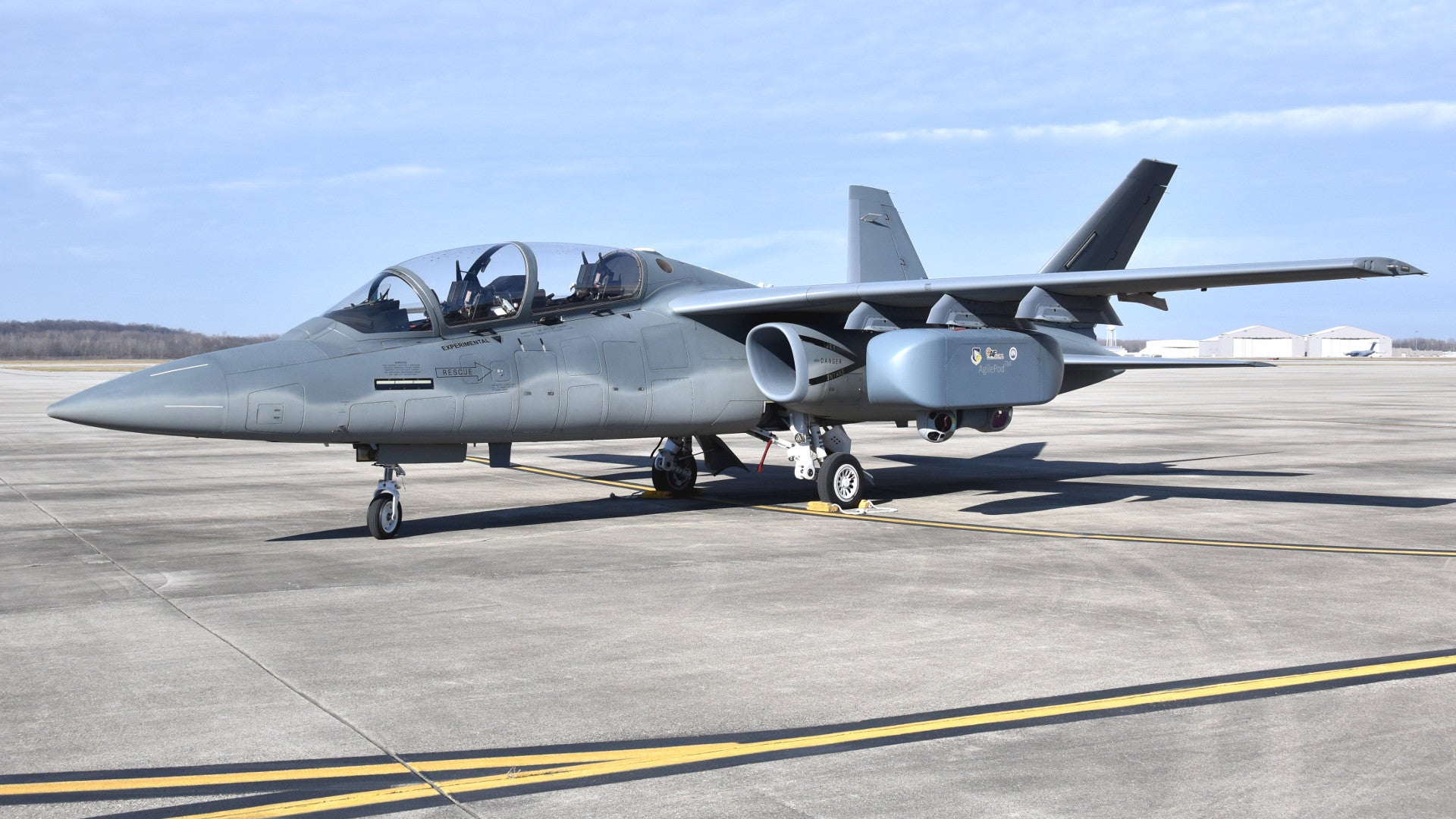The U.S. Air Force has conducted yet another test of its advanced AgilePod modular sensor pod, fit checking it under the wing of Textron’s Scorpion light jet. It’s curious that the service chose to use an airplane it has no official interest in buying to test this promising technology, but the partnership could offer other benefits for both parties.
The experiment occurred at Wright-Patterson Air Force Base in Ohio in December 2017. The Air Force Research Laboratory (AFRL) has been working on AgilePod, a registered trademark the service owns, since 2016. The pod is part of the larger Blue Guardian program, which is focused on exploring modular sensor suites and readily adaptable software and other systems to run them and potentially expand their capabilities in the future.
“We showed the openness of the pod by taking an aircraft with a standard set of mechanical and electrical interfaces and attaching the pod,” Andrew Soine, an electronics systems engineer with AFRL Materials and Manufacturing Directorate, told the service’s reporters. “We demonstrated the AgilePod’s plug-and-play ability to rapidly integrate on an open architecture platform.”
The ability to load up the pod and get it working with any aircraft, manned or unmanned, with the appropriate pylons and electrical linkages is a key part of the overall concept. The initial system itself consisted of multiple separate building blocks, either 28- or 33-inches long, each of which could accommodate different payloads. A complete pod would contain three to five of these individual units.
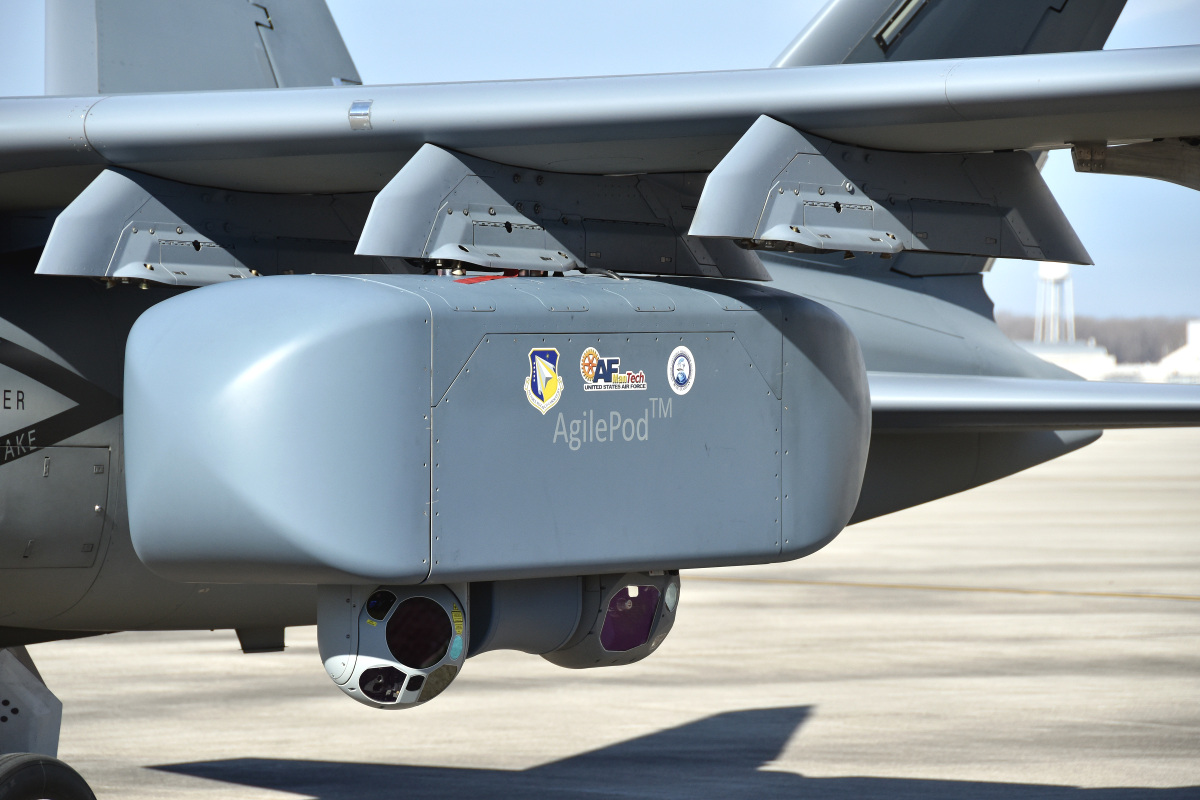
In October 2017, AFRL disclosed that it was working on a Mini AgilePod that would have the means to accommodate at least three different sensor systems within a single readily adaptable single section. The Air Force plans to eventually build small, medium, and large systems that better suited to different types of sensors and aircraft.
The underlying idea is to give deployed units the ability to rapidly swap out systems as necessary to give aviators the best mixture of systems for their particular mission. The version the Air Force test fitted to the Scorpion had two separate sensor turrets that could contain electro-optical, infrared, or multi-spectral cameras, or some combination thereof. By placing multiple sensors in a single pod, aircraft could improve their situational awareness while still keeping limited hardpoint space free for other stores.
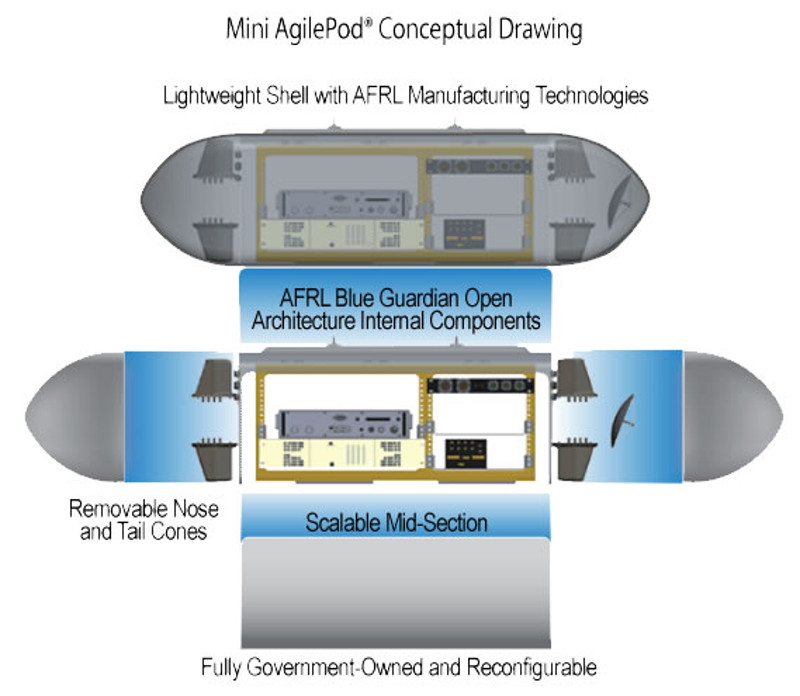
With its modular and adaptable architecture, AgilePod’s capabilities will only grow, especially as sensor suites continue to shrink in overall size. The system might even be able to accommodate other types of equipment in the future, such as communication nodes, electronic or cyber warfare packages, or miniature munitions.
The concept could be particularly game-changing for wide-area aerial surveillance missions, since individual sensors, such Elbit Systems’ SkyEye WAPS, are small enough to take the place of a typical camera turret, but can monitor multiple zones of interest at once. An AgilePod with more than one of these cameras would be able to collect imagery across a very broad area in a single pass. Separately, the U.S. military is working on artificial intelligence systems to help parse the visuals quickly for potential threats or other notable objects.

Combining this capability with Textron’s Scorpion could make for a particularly cost-effective pairing, especially given the jet’s own modular design and open architecture payload bays. With more sensors or extra fuel internally and an AgilePod under the wing, the plane could be particularly useful for border patrols or maritime surveillance or to conduct more persistent intelligence gathering missions, especially in lower-threat environments.
With one or more datalinks, it could feed targeting or situational information to other aircraft or troops on the ground or engage the enemy with its own precision guided weapons. After Saudi Arabia conducted a brief evaluation of the aircraft in November 2017, we at The War Zone took an in-depth look at the various missions the aircraft would be able to take on, which you can find here.
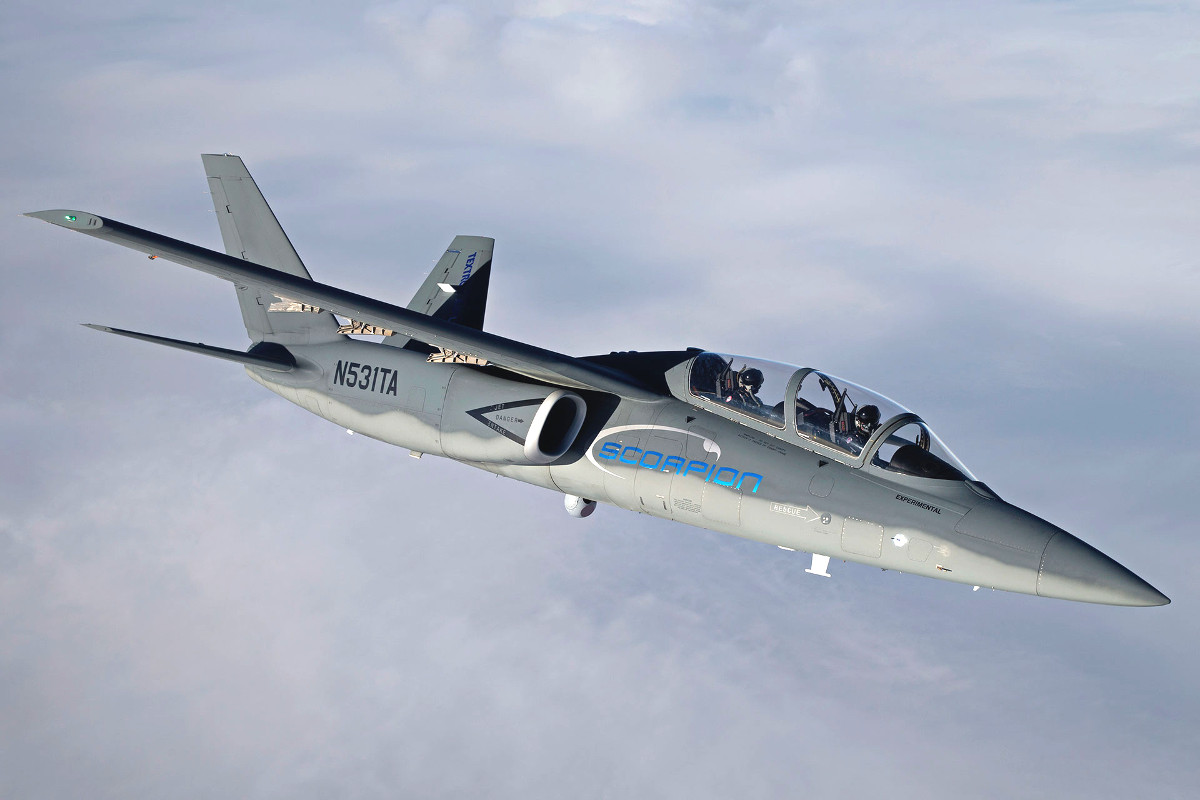
But it’s less clear why the Air Force decided to approach Textron about using the Scorpion in this particular test in the first place. The service did include the jet in its light attack experiment in 2017, also known as OA-X, but made clear that the aircraft did not have the desired capabilities to progress to a future second round combat evaluation.
Ostensibly, the point of using the Scorpion was to see just how easy it might be to load up the AgilePod onto an entirely new platform on short notice. According to the Air Force, Textron had a week to make sure one of its demonstrators would work with the sensor system.
“We met with the Textron Aviation Defense Scorpion team and discussed the possibility of doing a fit check with their Scorpion platform and the AgilePod,” Soine, the AFRL engineer explained. “We couldn’t miss this opportunity to show the AgilePod’s capabilities on a new class of aircraft.”
It’s hard to imagine that the Air Force didn’t have more immediate access to other test and evaluation aircraft within the service or already on contract that it could have used to test the pod, though. As noted, Scorpion makes heavy use of standardized and open-architecture components, so there’s no indication that integrating AgilePod onto the jet would have been any more challenging than doing so onto any other available platform.
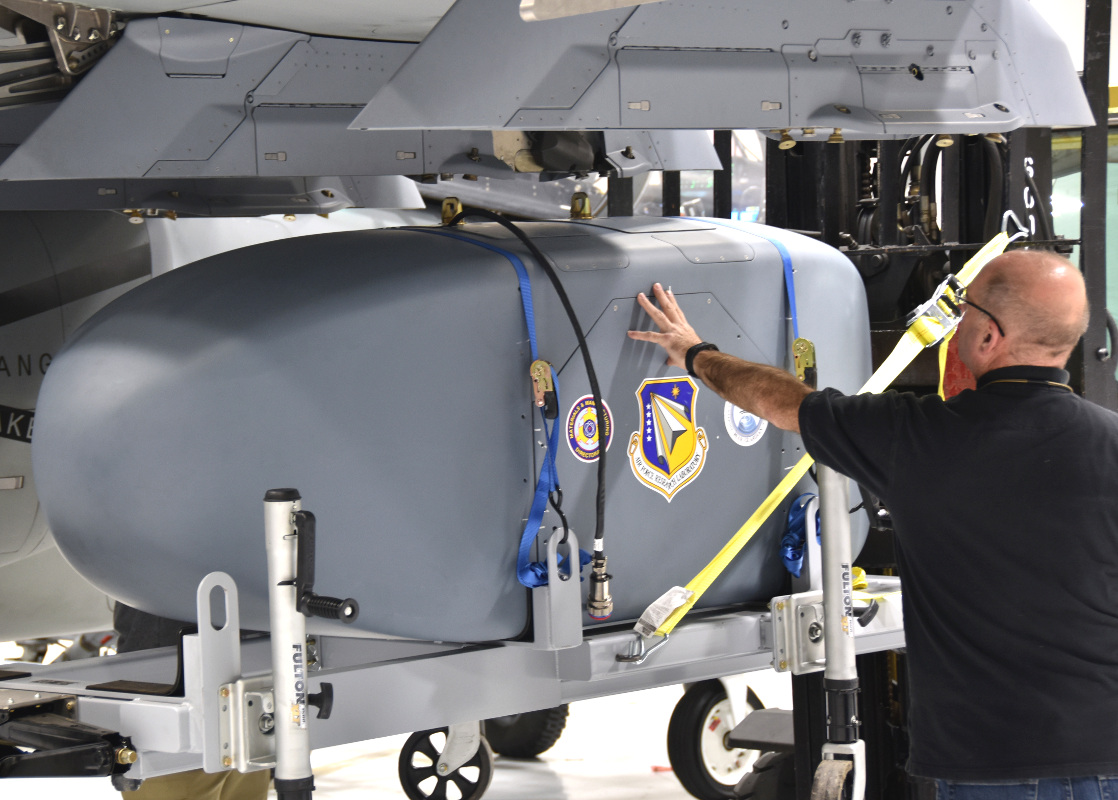
The Air Force also said loading the pod onto the Scorpion was the first time they had fit tested it on a “commercially-built manned platform,” which is not necessarily true. While it is the first time they’ve experimented with the system on an in-production commercial manned aircraft, the first reported flight test involved a DC-3 test plane.
AFRL’s main flight test goal doesn’t appear to be manned, either. The plan is to eventually integrate AgilePod onto an MQ-9 Reaper drone.
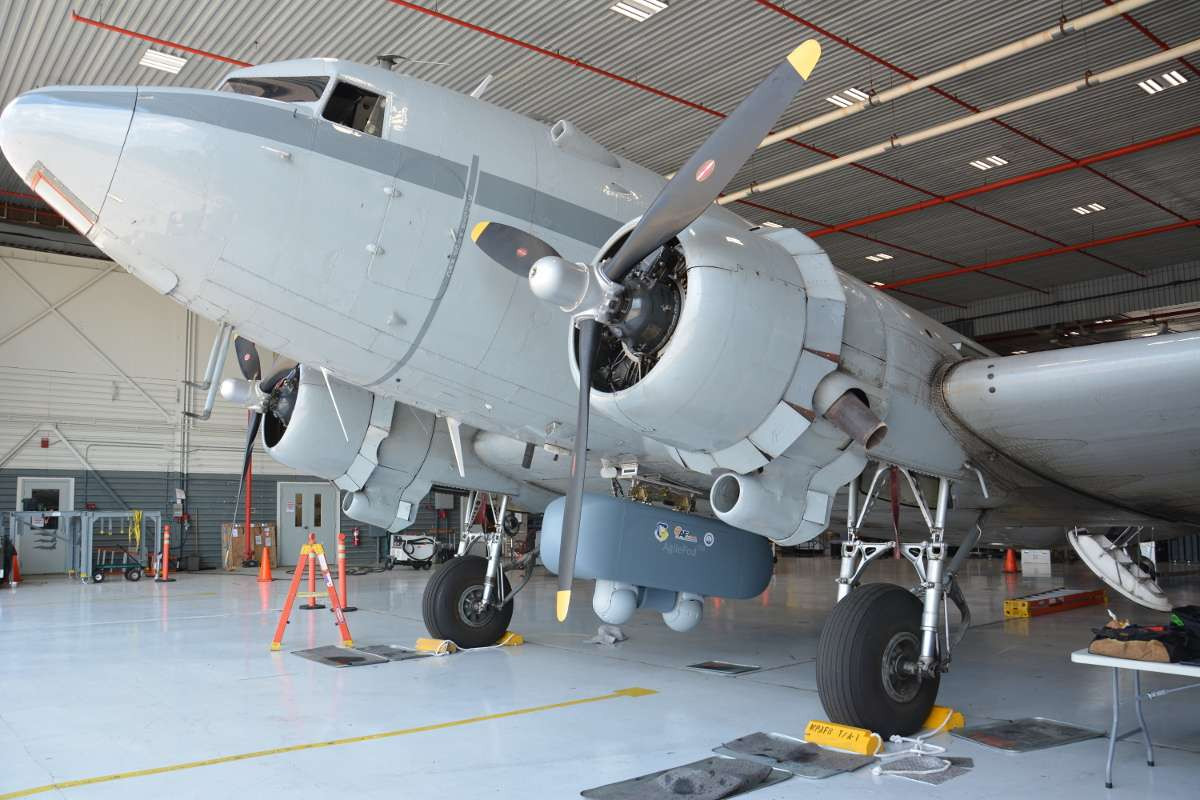
It is possible the two parties joined together as part of a cost-sharing or other cooperative engagement. This could have allowed the Air Force to continue exploring the capabilities of AgilePod, while Textron would have the opportunity to further demonstrate Scorpion’s multi-mission potential. It is possible that Textron could leverage the Air Force’s work on the program to expand the jet’s own modular capabilities.
“This is a win-win situation for the Air Force as well as industry,” Air Force Captain Russell Shirey, the chief engineer in the Advanced Projects Branch, part of AFRL’s Sensors Directorate, said. “The AFRL Blue Guardian team has been developing rapid integration sensor technologies and standards, which are not only on the AgilePod, but are beginning to show up on aircraft as well.”
There would be some precedent for this, given that the Air Force signed a so-called Cooperative Research and Development Agreement, or CRADA, with Textron in 2016 to certify Scorpion’s airworthiness. This was the first time the service had ever certified an aircraft it otherwise had no intention of buying and it did so with an eye toward future public-private partnerships. The two parties may be expanding the relationship to utilize Scorpion as a more cost effective test bed compared to other military aircraft or more traditional arrangements with private contractors.

And since the service has yet to release the results of the OA-X tests, it is possible that they include a recommendation for further evaluation of the Scorpion, either for potential Air Force use or as a option for military assistance packages to foreign nations in the future. We at The War Zone noted that the presence of observers from multiple different countries at the light attack experiment was a strong indicator of foreign interest in one or more of the participating aircraft.
So, as the AFRL Blue Guardian program continues, we will undoubtedly see more of AgilePod and its scalable cousins. We may also see the Air Force increasingly work with Textron and the Scorpion on those tests, or entirely separate experiments, too.
Contact the author: joe@thedrive.com
